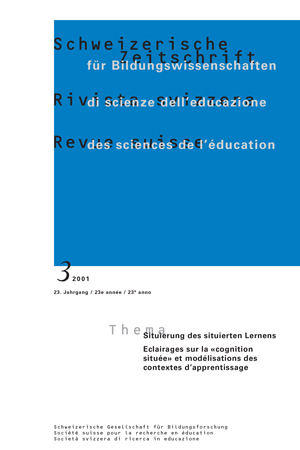Anchored Instruction: Situated Learning in Multimedia Learning Environments
DOI:
https://doi.org/10.24452/sjer.23.3.4615Abstract
«Anchored Instruction» is an American constructivist approach that is known for the development and implementation of technologically supported learning environments for various school subject matters and age levels. Student learning is situated in age appropriate, complex, and engaging macro-contexts. Social and technological scaffolds are combined to ensure problem solving as well as flexible use and transfer of learned knowledge. Important goals, design principles, and implementation features of these learning environments are illustrated by presenting two applications: (1) «The Adventures of Jasper Woodbury», a series of video-based stories and additional materials exposing students to complex mathematical problems, and (2) «The Little Planet Literacy Series» introducing first graders to reading and writing by linking conventional and multimedia learning activities to video-based fictional stories. Some research findings related to these applications are summarized. Further, a taxonomy of social and technological learning scaffolds that are typical for anchored instruction environments is presented. Considering the substantial effort required for the development and implementation of the learning environments, a number of critical questions and issues are discussed at the end of the article. Further, a taxonomy of social and technological learning scaffolds that are typical for anchored instruction environments is presented. Considering the substantial effort required for the development and implementation of the learning environments, a number of critical questions and issues are discussed at the end of the article.
Downloads
Downloads
Published
Issue
Section
License

This work is licensed under a Creative Commons Attribution 4.0 International License.



